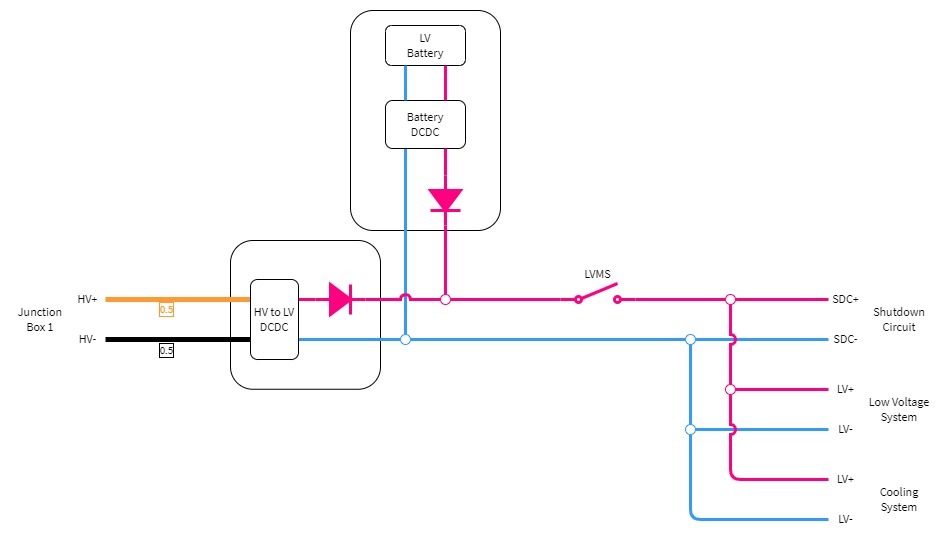A new challenge for Green Team Twente
For just over ten years Green Team Twente has been competing in the Shell Eco Marathon, a competition all about efficiency. This experience resulted in the team becoming World Champions in 2019, due to the pandemic this was the last year in which the race was held. This year we are making a change: We will participate one last time in the Shell Eco Marathon while making the shift to Formula Student, a competition more aimed at speed. Because this competition currently only allows ICE and battery powered cars, we will be the only team powered by hydrogen.
This makes our task really difficult, as we not only have to follow the rules set by the competition, but sometimes have to break a rule or even set our own rules (e.g. for the whole hydrogen system). We are in close contact with the organisations in both Germany and the Netherlands, to set up a hydrogen class for the years to come.
The car we will use for the Shell Eco Marathon has mostly been built by the last two teams, so I will not focus on that. Way more interesting is the new Formula Student race car, which we started designing in September. Let’s take a closer look at its Electrical System.
The Electrical System
The car contains two electrical systems. First is the Tractive System, consisting of the Fuel Cell, a DCDC Converter, a capacitor stack as energy buffer, an air compressor and the motors. The 49kW Fuel Cell operates between 130V and 180V, which results in really high currents and therefore thick cables. To combat this, the power coming from the fuel cell goes through a DCDC converter, boosting the voltage to about 400V. When accelerating, a lot more power is needed, but sudden and frequent changes in the power usage are bad for the fuel cell. That is why we have a bank of capacitors to provide extra power. These are then charged with regenerative braking during deceleration or by the fuel cell during standstill. All this power is then fed to the motor and compressor inverters. They both convert the power to 3-phase AC, which is used to power the air compressor and the two drive motors. A total of six high current relays (called AIR in the schematic) are able to interrupt power to shut the car down in case of an emergency.

A schematic drawing of our Tractive System
Then there is the Low Voltage System. This is concerned with controlling the car by transferring the accelerator pedal signal to the motor controller and transmitting all important information real-time to our server. It also ensures the safety of the car by using a lot of sensors and a shutdown circuit, which is able to interrupt all power to the motors when needed.
Supplying the Low Voltage System
As the chief of the Electronics subteam I am tasked with keeping a good overview of the complete electrical system, but I also design and build parts myself, for example the Low Voltage Supply. This consists of a 400V to 24V galvanically isolated DCDC converter and a 24V battery in parallel. During normal operation the control, safety, and cooling components in the Low Voltage System are powered from the high voltage Tractive System. The battery is only used whenever the Tractive System is switched off, for example because of an insulation fault. This may sound quite straightforward, but choosing the DCDC converter and battery turned out to be quite a challenge. It was very hard to accurately predict the power draw of the cooling system, which will be drawing the most power. But in the end we were able to calculate how much all the pumps and ventilators would need and base our choices on that. The battery also had to be protected against the converter and vice versa, because they could damage each other by both imposing a different voltage. That is why I added diodes that prevent current from the battery flowing into the DCDC converter, or from the DCDC converter flowing into the battery.

Schematic drawing of the Low Voltage Supply
Being part of a student team
I decided to join a student team because I saw an opportunity to work in a large multidisciplinary team. During the Bachelor you have quite some projects, but you do those in small groups and you never have a lot of time to finish them. A student team is the perfect place to get to know a lot of new people with different backgrounds and expand your practical knowledge of Electrical Engineering. I decided to take a gap year to be able to fully focus on the task at hand, but it’s also possible to do a student team part-time, in every proportion imaginable: Some of my teammates follow their normal curriculum next to Green Team, others do just one course per module. As long as you have the motivation, it is possible.
Do you want to be part of Green Team Twente 22/23, building on the only hydrogen-powered racing car competing in the Formula Student race? Apply now on our website!
